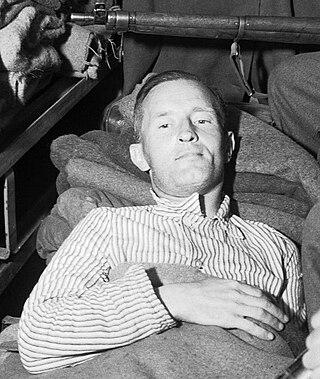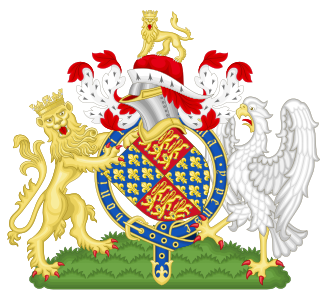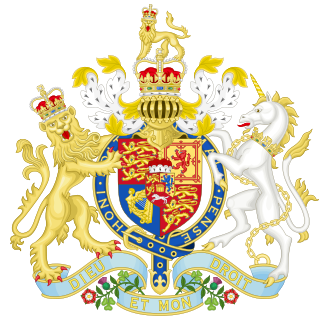
Under the law of the United Kingdom, high treason is the crime of disloyalty to the Crown. Offences constituting high treason include plotting the murder of the sovereign; committing adultery with the sovereign's consort, with the sovereign's eldest unmarried daughter, or with the wife of the heir to the throne; levying war against the sovereign and adhering to the sovereign's enemies, giving them aid or comfort; and attempting to undermine the lawfully established line of succession. Several other crimes have historically been categorised as high treason, including counterfeiting money and being a Catholic priest.
Misprision of treason is an offence found in many common law jurisdictions around the world, having been inherited from English law. It is committed by someone who knows a treason is being or is about to be committed but does not report it to a proper authority.

The Treason Act 1351 is an Act of the Parliament of England which codified and curtailed the common law offence of treason. No new offences were created by the statute. It is one of the earliest English statutes still in force, although it has been very significantly amended. It was extended to Ireland in 1495 and to Scotland in 1708. The Act was passed at Westminster in the Hilary term of 1351, in the 25th year of the reign of Edward III and was entitled "A Declaration which Offences shall be adjudged Treason". It was passed to clarify precisely what was treason, as the definition under common law had been expanded rapidly by the courts until its scope was controversially wide. The Act was last used to prosecute William Joyce in 1945 for collaborating with Germany in World War II.

The Treason Act 1695 is an Act of the Parliament of England which laid down rules of evidence and procedure in high treason trials. It was passed by the English Parliament but was extended to cover Scotland in 1708 and Ireland in 1821. Some of it is still in force today.

The Sedition Act 1661 was an Act of the Parliament of England, although it was extended to Scotland in 1708. Passed shortly after the Restoration of Charles II, it is no longer in force, but some of its provisions continue to survive today in the Treason Act 1695 and the Treason Felony Act 1848. One clause which was included in the Treason Act 1695 was later adapted for the United States Constitution.

The Treason Act 1945 was an Act of the Parliament of the United Kingdom.

The Treason Act 1553 was an Act of the Parliament of England.

The Treason Act 1554 was an Act of the Parliament of England. It is not to be confused with two other Acts about treason passed in the same year, 1 & 2 Ph & M c 9 and 11.

The Treason Act 1746 was an Act of the Parliament of Great Britain. The long title is "An Act for allowing Persons impeached of High Treason, whereby any Corruption of Blood may be made, or for Misprision of such Treason, to make their full Defence by Council."

The Treason (Ireland) Act 1821 is an Act of the Parliament of the United Kingdom. It extended most of the English Treason Act 1695 to Ireland. Previously the 1695 Act only applied to England and Scotland.

The Treason Act 1547 was an Act of the Parliament of England. It is mainly notable for being the first instance of the rule that two witnesses are needed to prove a charge of treason, a rule which still exists today in the United States Constitution.

The Forgery Act 1861 is an Act of the Parliament of the United Kingdom of Great Britain and Ireland. It consolidated provisions related to forgery from a number of earlier statutes into a single Act. For the most part these provisions were, according to the draftsman of the Act, incorporated with little or no variation in their phraseology. It is one of a group of Acts sometimes referred to as the Criminal Law Consolidation Acts 1861. It was passed with the object of simplifying the law. It is essentially a revised version of an earlier consolidation Act, the Forgery Act 1830, incorporating subsequent statutes.

The Incitement to Mutiny Act 1797 was an Act passed by the Parliament of Great Britain. The Act was passed in the aftermath of the Spithead and Nore mutinies and aimed to prevent the seduction of sailors and soldiers to commit mutiny.

The Jurors (Scotland) Act 1745 was an Act of the Parliament of Great Britain, passed during the Jacobite Rising of 1745. Its long title was "An Act for the more easy and speedy Trial of such Persons as have levied, or shall levy War against His Majesty; and for the better ascertaining the Qualifications of Jurors in Trials for High Treason or Misprision of Treason, in that Part of Great Britain called Scotland." It was one of the Juries (Scotland) Acts 1745 to 1869.
The first signs of the modern distinction between criminal and civil proceedings were during the Norman conquest of England in 1066. The earliest criminal trials had very little, if any, settled law to apply. However, the civil delictual law was highly developed and consistent in its operation.

The Forgery of Foreign Bills Act 1803 was an Act of the Parliament of the United Kingdom. Prior to its repeal in 2013, it created offences of forgery of foreign instruments in Scotland.

The Forgery Act 1830 was an Act of the Parliament of the United Kingdom. It consolidated into one Act all legislation imposing the death penalty for forgery. Two years later the death penalty was abolished for most of these offences, and for the remaining offences in 1837.

The Treason Outlawries (Scotland) Act 1748 was an Act of the Parliament of Great Britain which applied only to Scotland. Its long title was "An Act to ascertain and establish the Method of Proceeding to and upon Outlawries for High Treason and Misprision of High Treason, in Scotland."

The Bank of England Act 1696 was an Act of the Parliament of England. It was one of the Bank of England Acts 1694 to 1892.

The Treason (Ireland) Act 1854 is an Act of the Parliament of the United Kingdom of Great Britain and Ireland. It extended part of the Treason Act 1708 to Ireland, specifically the rules about giving the defendant advance notice of the witnesses and jurors in his case. It was repealed as regards Northern Ireland by the Treason Act 1945, which abolished the unique procedural rules which applied in treason cases. As of 16 January 2020 it remains in force in the Republic of Ireland.










